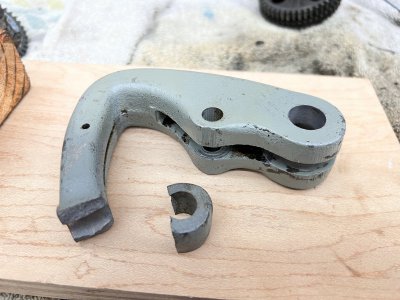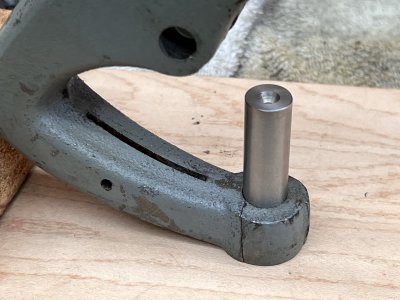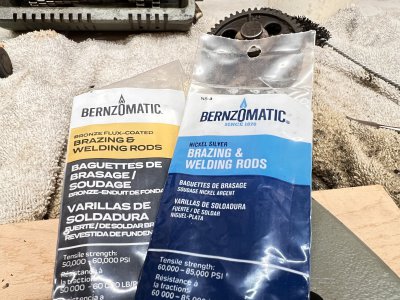- Joined
- Dec 6, 2021
- Messages
- 224
Behold the broken gear lever for the QCGB on my late model Atlas/Craftsman 12. Like to take a shot at fixing it before try finding a replacement. I’ve got a gas welding outfit and a couple different kinds of fluxed brazing rod. I did enough brazing in HS to give me courage. Also I’m cheap. So why not, right…
My question(s) – can I save myself some work and keep filler metal out of the bore by leaving a stainless dowel in the void while brazing? Am I correct to assume the brass won’t stick to the stainless and should press out after everything’s cooled? Is there a better procedure with the resources I have? Or is there a better filler metal (on Amazon) for what I’m trying to do?
WWTFD? (What would the forum do…)



My question(s) – can I save myself some work and keep filler metal out of the bore by leaving a stainless dowel in the void while brazing? Am I correct to assume the brass won’t stick to the stainless and should press out after everything’s cooled? Is there a better procedure with the resources I have? Or is there a better filler metal (on Amazon) for what I’m trying to do?
WWTFD? (What would the forum do…)



Last edited:

